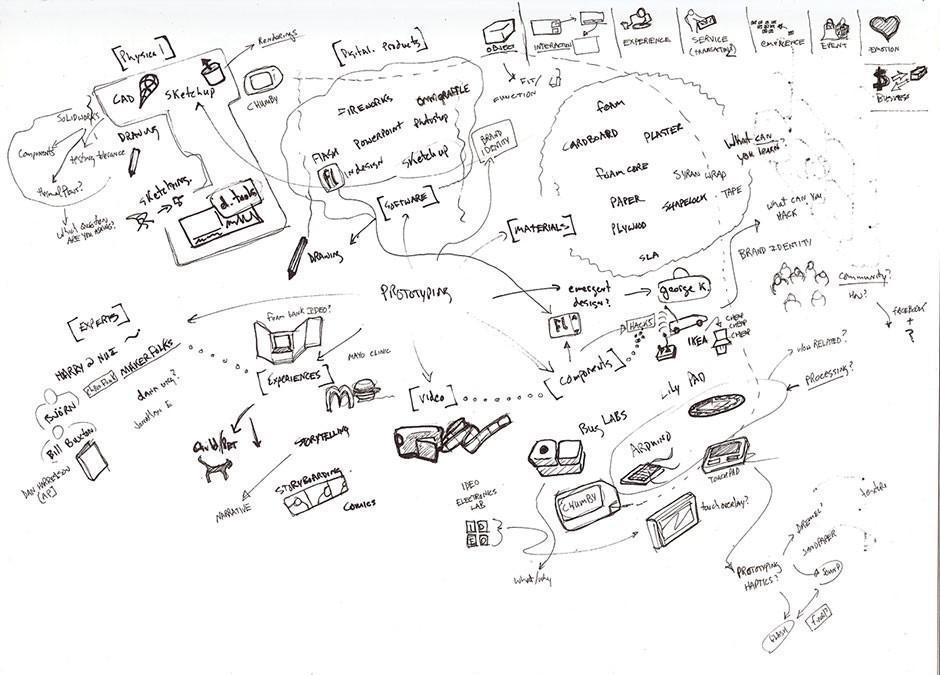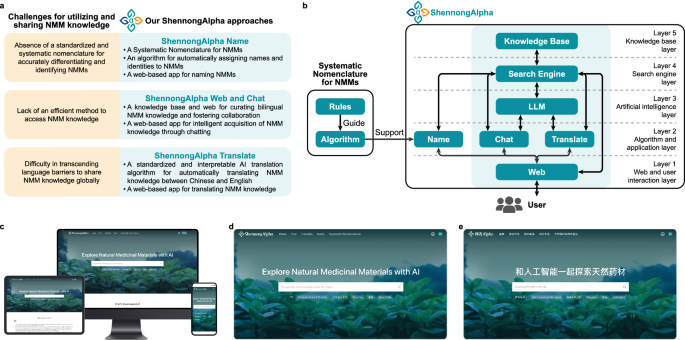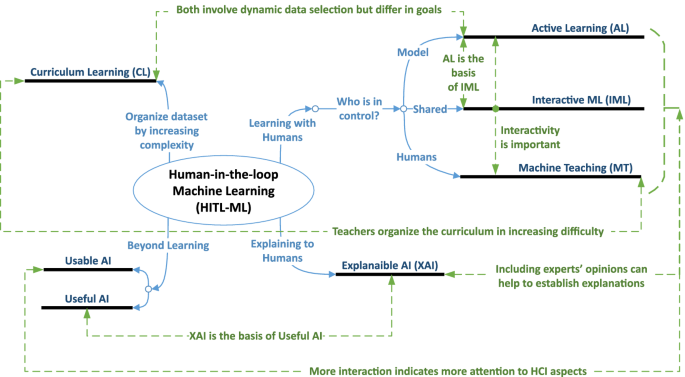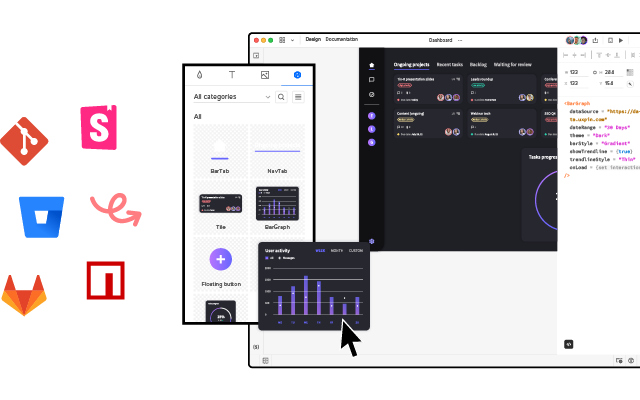Revolutionizing the Design Process: The Ultimate UX Designer's Toolkit for AI-Generated Mockups
Transform your design workflow with cutting-edge AI tools and techniques
The world of UX design is experiencing a paradigm shift with AI-powered mockup generation tools drastically reducing iteration times and allowing designers to focus more on creative direction than technical execution. In this guide, I'll walk you through the essential technologies, tools, and strategies that are revolutionizing the design process in 2025.
The Evolution of UX Mockup Creation
When I first started in UX design, creating mockups was a painstaking process that involved countless hours of manual work. Each iteration required meticulous attention to detail, and the back-and-forth between designers and stakeholders could extend project timelines by weeks or even months.

The evolution of mockup creation from manual processes to AI-assisted workflows
The traditional mockup creation process typically involved:
- Initial sketching and ideation (often on paper)
- Low-fidelity wireframing in specialized software
- Multiple review cycles with stakeholders
- High-fidelity mockup creation
- Additional review cycles
- Final adjustments and handoff to development
This process was not only time-consuming but also limited the number of design variations that could be explored. The emergence of visual AI tools has fundamentally changed this landscape. Today's AI-powered design tools can generate high-quality mockups from simple text descriptions or rough sketches in minutes rather than days.
Efficiency Transformation
The numbers speak for themselves - AI-generated mockups are transforming efficiency metrics with up to a 70% reduction in iteration time according to recent industry reports. This dramatic improvement allows design teams to explore more creative directions and spend more time refining the user experience.
Perhaps most significantly, I've witnessed a fundamental shift in the designer's role. Rather than spending most of our time on technical execution, we're now able to focus more on creative direction and strategic thinking. This evolution has elevated the UX designer's position from a technical implementer to a creative director who guides AI tools to manifest their vision.
Time Allocation in UX Design Process
The following chart shows how AI tools have transformed how designers spend their time:
Core AI Mockup Generation Technologies
To effectively leverage AI for mockup generation, I've found it essential to understand the core technologies that power these tools. This knowledge helps me craft better prompts and select the right tool for specific design challenges.
AI Mockup Generation Technology Stack
The following diagram illustrates how different AI technologies work together:
flowchart TD
A[Designer Input] --> B[AI Processing Layer]
B --> C1[NLP Engine]
B --> C2[Computer Vision]
B --> C3[ML Design Models]
B --> C4[Style Transfer]
C1 --> D[Mockup Generation Engine]
C2 --> D
C3 --> D
C4 --> D
D --> E[Generated Mockups]
E --> F[Human Refinement]
F -->|Feedback Loop| A
classDef orange fill:#FF8000,stroke:#E65100,color:white
classDef blue fill:#42A5F5,stroke:#1976D2,color:white
class B,D orange
class C1,C2,C3,C4 blue
Natural Language Processing for Text-to-Design
At the heart of modern mockup generation tools is sophisticated natural language processing (NLP) that can interpret design requirements expressed in plain English. When I describe a "minimalist e-commerce product page with prominent product images and subtle call-to-action buttons," the AI can parse these descriptive elements and translate them into visual components.
PageOn.ai's Vibe Creation feature takes this a step further by allowing me to articulate visual needs conversationally. I can describe not just the elements I want but also the feeling and atmosphere the design should evoke, and the AI translates these abstract concepts into concrete visual expressions.
Computer Vision for Sketch-to-Digital Conversion
Another groundbreaking technology is the ability to transform hand-drawn sketches into polished digital mockups. This capability bridges the gap between traditional ideation methods and digital production, allowing me to quickly capture ideas on paper and have them transformed into professional-looking designs within minutes. This technology uses advanced computer vision algorithms to recognize UI patterns and translate rough shapes into precise interface elements.

Transformation from hand-drawn sketch to polished digital mockup
Machine Learning Models for Design Best Practices
What truly impresses me about the latest generation of AI mockup tools is their understanding of design best practices. These tools have been trained on thousands of professional UI/UX designs and can apply principles like visual hierarchy, color theory, typography rules, and accessibility standards automatically.
For example, when generating a mobile app interface, the AI will automatically apply appropriate touch target sizes, maintain consistent spacing, and ensure sufficient contrast ratios for text legibility. This built-in knowledge serves as a valuable safeguard against common design mistakes.
PageOn.ai's Vibe Creation
One of the most powerful features I've discovered is PageOn.ai's Vibe Creation capability. It allows me to communicate abstract design concepts in natural language and have them translated into concrete visual elements. For instance, I can request a "friendly, approachable interface with a touch of playfulness" and the AI will generate mockups with appropriate color schemes, typography, and visual elements that convey those emotional qualities.
The integration of these technologies creates a powerful ecosystem for mockup generation that adapts to different design needs and workflows. By understanding how each component works, I can better direct the AI to achieve my desired outcomes.
Essential Tools in the Modern UX Designer's Arsenal
My toolkit has evolved dramatically in recent years as ai visual tools have matured. Today, I rely on a combination of specialized AI-powered applications that each excel at different aspects of the design process.
Comparative Analysis of Leading AI Mockup Generators
| Tool | Key Strengths | Best For | Integration |
|---|---|---|---|
| Uizard |
|
Early-stage ideation and rapid prototyping | Figma, Adobe XD |
| Reelmind.ai |
|
High-fidelity mockups and unique visual styles | Sketch, Figma, Framer |
| Creatie Wizard |
|
Team collaboration and iterative design | Figma, InVision |
| PageOn.ai |
|
End-to-end design workflow and complex visualization needs | Universal export options, API integration |
Specialized Tools for Different Design Stages
I've found that different tools excel at different stages of the design process:
- Ideation and Concept Generation: Tools with strong text-to-image capabilities that can quickly visualize abstract concepts
- Wireframing: Applications that focus on layout and structure rather than visual details
- High-Fidelity Mockups: Tools with robust style transfer and design system implementation
- Prototyping: Solutions that can generate interactive elements and transitions between screens
My workflow typically involves using multiple specialized tools rather than trying to find a single solution for all needs. This approach allows me to leverage the unique strengths of each tool at the appropriate stage.

PageOn.ai's AI Blocks feature allowing modular mockup construction
Integration Capabilities
The most valuable tools in my arsenal are those that integrate seamlessly with my existing design ecosystem. This integration is crucial for maintaining workflow efficiency and avoiding the friction of constantly exporting and importing between different applications.
For example, I particularly appreciate tools that can export directly to Figma or Adobe XD, allowing me to refine AI-generated mockups using familiar software. The best AI mockup generators also support design system integration, ensuring that generated mockups adhere to established brand guidelines and component libraries.
PageOn.ai's AI Blocks
One standout feature that has transformed my workflow is PageOn.ai's AI Blocks. This innovative approach allows me to build and iterate on mockups without getting bogged down in complex software logic. Each "block" represents a modular UI component that can be generated, customized, and combined with other blocks to create complete interfaces. This modular approach makes it easy to experiment with different layouts and component combinations while maintaining design consistency.
As ai image generation tools continue to evolve, I expect to see even more specialized applications that address specific niches within the design process. The key to staying productive will be identifying which tools truly add value to your workflow rather than adopting every new solution that emerges.
Implementing AI-Generated Mockups in Your Design Workflow
Successfully integrating AI mockup tools into your existing workflow requires a strategic approach. Through trial and error, I've developed a methodology that maximizes the benefits of these tools while maintaining creative control and design integrity.
Establishing an Effective Prompt Engineering Strategy
The quality of AI-generated mockups depends significantly on the quality of your prompts. I've found that effective design specification prompts typically include:
- Clear audience definition: Who will use this interface?
- Specific functionality requirements: What actions should users be able to take?
- Aesthetic direction: What mood, style, or brand guidelines should be followed?
- Technical constraints: What platform or device is this designed for?
- Contextual examples: References to existing designs that exemplify desired elements
AI-Enhanced Design Workflow
The following diagram illustrates an effective AI-integrated design process:
flowchart TD
A[Project Requirements] --> B[Prompt Engineering]
B --> C[Initial AI-Generated Mockups]
C --> D{Review & Evaluate}
D -->|Needs Refinement| E[Refine Prompts]
E --> C
D -->|Promising Direction| F[Human Designer Refinement]
F --> G[Stakeholder Feedback]
G --> H{Approved?}
H -->|No| F
H -->|Yes| I[Final Mockups & Handoff]
classDef orange fill:#FF8000,stroke:#E65100,color:white
classDef blue fill:#42A5F5,stroke:#1976D2,color:white
classDef green fill:#66BB6A,stroke:#2E7D32,color:white
class B,C,E orange
class F,G blue
class I green
Creating a Feedback Loop
I've learned that AI-generated mockups should be viewed as a starting point rather than a finished product. Establishing an effective feedback loop between AI tools and human refinement is essential for achieving optimal results. This typically involves:
- Generating multiple variations using slightly different prompts
- Evaluating the strengths and weaknesses of each generated mockup
- Refining prompts based on these observations
- Manually adjusting promising mockups to address specific issues
- Testing refined designs with users or stakeholders
- Iterating based on feedback

The iterative feedback loop between AI generation and human refinement
Maintaining Brand Consistency
One challenge I frequently encounter is ensuring that AI-generated mockups adhere to established brand guidelines. To address this, I recommend:
- Creating a "brand prompt template" that includes key brand elements, color codes, typography details, and voice/tone guidelines
- Using design system integration features when available
- Providing reference images of existing branded materials
- Establishing post-generation quality control checkpoints specifically for brand compliance
Leveraging PageOn.ai's Deep Search
One feature that has significantly improved my workflow is PageOn.ai's Deep Search capability. This tool automatically integrates relevant design elements and inspiration based on my project requirements. For example, when designing a healthcare application, Deep Search can pull in appropriate iconography, color schemes commonly used in healthcare interfaces, and layout patterns that have proven effective for similar applications. This contextual awareness helps ensure that my mockups aren't just visually appealing but also aligned with industry best practices.
By thoughtfully implementing these strategies, I've been able to integrate AI mockup generation tools into my workflow in a way that enhances rather than replaces my design expertise. The key is viewing AI as a collaborative partner in the design process rather than a replacement for human creativity and judgment.
Overcoming Common Challenges with AI-Generated UX Mockups
While AI mockup generation tools offer tremendous benefits, they also present unique challenges that every UX designer must learn to navigate. Through my experience, I've developed strategies for addressing the most common obstacles.
Addressing Limitations in AI's Understanding of Context
Even the most advanced AI tools sometimes struggle with nuanced contextual understanding. For instance, an AI might generate a beautiful e-commerce product page without recognizing that the specific industry has unique regulatory requirements or user expectations.
To overcome this limitation, I've found it effective to:
- Provide explicit contextual information in prompts (industry, user demographics, specific use cases)
- Use reference images that demonstrate similar contextual applications
- Break complex designs into smaller, more manageable components that can be generated separately and then combined
- Develop a library of context-specific prompt templates for recurring design scenarios
Common AI Mockup Generation Challenges
Based on my experience, these are the most frequent challenges designers face:
Strategies for Maintaining Creative Control
Another challenge I've encountered is balancing the efficiency of AI generation with the need to maintain creative control and design authenticity. When AI tools generate complete mockups, there's a risk of designs feeling generic or lacking the unique creative touch that distinguishes great UX work.
To maintain creative control while maximizing AI efficiency, I recommend:
- Use AI for structure, add uniqueness manually: Let AI generate the foundational layout and basic components, then manually add distinctive creative elements
- Generate multiple variations: Request several different approaches to the same design challenge and cherry-pick the most promising elements from each
- Implement a "human touch" review stage: Establish a dedicated step in your workflow for adding distinctive creative elements that reflect your personal or brand design philosophy
- Focus AI on tedious tasks: Direct AI tools toward repetitive or technical aspects of design while reserving unique creative decisions for yourself
Ethical Considerations and Attribution
As AI-generated designs become more prevalent, ethical questions around attribution, originality, and transparency have emerged. In my practice, I've adopted these principles:
- Be transparent with clients about which aspects of a design were AI-generated versus human-created
- Understand the training data sources of the AI tools you use and their implications for originality
- Develop clear policies about ownership and attribution for AI-assisted work
- Consider the impact of AI tools on the broader design community and job market

Finding the optimal balance between AI automation and human creativity
Using PageOn.ai's Agentic Capabilities
One of the most effective ways I've found to overcome the contextual limitations of AI is through PageOn.ai's Agentic capabilities. This advanced feature helps transform vague design concepts into precise visual implementations by actively reasoning about design decisions rather than simply generating based on pattern recognition. The system can ask clarifying questions, suggest alternatives based on best practices, and explain the rationale behind design choices. This collaborative approach helps bridge the gap between abstract design intentions and concrete visual outcomes.
By acknowledging and actively addressing these challenges, I've been able to harness the power of AI mockup tools while avoiding their potential pitfalls. The key is developing a thoughtful approach that leverages AI strengths while compensating for its limitations through human expertise and judgment.
Future-Proofing Your UX Design Skills in an AI-Enhanced Landscape
As AI continues to transform the UX design field, I've been actively evolving my skill set to remain relevant and valuable in this changing landscape. The rise of free AI tools for generating images and mockups is just the beginning of a more profound transformation in our profession.
Evolving Skill Requirements
The skills that defined successful UX designers in the past are shifting dramatically. While technical proficiency with design software once dominated job requirements, I've noticed a significant shift toward skills that complement AI capabilities:
Evolution of UX Designer Skill Requirements
How the emphasis on different skills has shifted with AI adoption:
graph LR
A[Traditional UX Skills] --> B[Transition Phase]
B --> C[AI-Enhanced UX Skills]
subgraph "Traditional Focus"
A1[Software Proficiency] --- A
A2[UI Component Creation] --- A
A3[Layout Design] --- A
end
subgraph "Transition Skills"
B1[Prompt Engineering] --- B
B2[AI Tool Evaluation] --- B
B3[Hybrid Workflows] --- B
end
subgraph "Future-Proof Skills"
C1[Strategic Direction] --- C
C2[Human-AI Collaboration] --- C
C3[Ethical Oversight] --- C
C4[Context Translation] --- C
end
classDef orange fill:#FF8000,stroke:#E65100,color:white
classDef blue fill:#42A5F5,stroke:#1976D2,color:white
classDef green fill:#66BB6A,stroke:#2E7D32,color:white
class A blue
class B orange
class C green
Based on my experience navigating this transition, I recommend focusing on developing these future-proof skills:
- Prompt engineering: The ability to effectively communicate design requirements to AI tools
- Strategic thinking: Focusing on the "why" of design decisions rather than just the "how"
- Human psychology and behavior: Understanding nuanced aspects of user experience that AI may miss
- Creative direction: Providing high-level guidance that shapes AI-generated designs
- Critical evaluation: Assessing AI outputs for quality, appropriateness, and potential issues
- Cross-disciplinary collaboration: Working effectively with developers, product managers, and other stakeholders
Balancing Technical Knowledge with Creative Direction
While AI tools are increasingly handling the technical execution of designs, I've found that maintaining a baseline of technical knowledge remains important. Understanding the capabilities and limitations of development technologies helps ensure that designs are not only beautiful but also feasible to implement. However, the emphasis is shifting from technical execution to creative direction—guiding AI tools to achieve specific design outcomes rather than manually creating every element.

The future UX designer as a creative director of AI design tools
Continuous Learning Strategies
To stay ahead of AI advancements, I've implemented these continuous learning strategies:
- Dedicated experimentation time: Setting aside regular time to explore new AI tools and techniques
- Cross-disciplinary learning: Studying adjacent fields like psychology, marketing, and data science
- Community engagement: Participating in forums and groups focused on AI-assisted design
- Deliberate skill development: Identifying emerging skills and creating learning plans to acquire them
- Feedback collection: Regularly soliciting input on how to improve AI-human collaboration
How PageOn.ai Supports High-Value Creative Work
One of the most valuable aspects of PageOn.ai is how it helps me focus on high-value creative work rather than technical execution. By automating repetitive aspects of the design process and providing intelligent suggestions based on design best practices, the platform frees me to concentrate on strategic thinking, user psychology, and innovative approaches. This shift has not only made my work more enjoyable but also more impactful, as I can dedicate more mental energy to solving core user problems rather than wrestling with software tools.
The UX designers who will thrive in the coming years are those who view AI not as a threat but as a powerful collaborator that amplifies their creative capabilities. By embracing this mindset and continuously evolving your skills, you can ensure your relevance and value in an increasingly AI-enhanced design landscape.
Case Studies: Successful Implementation of AI Mockup Tools
Throughout my career, I've witnessed remarkable transformations when teams successfully integrate AI mockup tools into their workflows. These real-world examples illustrate both the quantifiable benefits and the qualitative improvements that can result from thoughtful implementation.
Case Study 1: E-Commerce Redesign
A mid-sized online retailer needed to completely redesign their mobile shopping experience to address declining conversion rates. Using traditional methods, their previous redesign had taken nearly 4 months from concept to final mockups.

Before and after comparison of the e-commerce redesign workflow
The AI-Enhanced Approach:
- The team used AI tools to generate 15 different homepage concepts based on detailed prompts that incorporated user research findings
- Stakeholders reviewed the concepts and selected elements they preferred from multiple designs
- These preferences were used to refine prompts for product detail pages and checkout flows
- Designers manually refined the AI-generated mockups to ensure brand consistency and optimize user flows
Results:
- Total time from concept to final mockups: 3 weeks (compared to 4 months previously)
- Number of design concepts explored: 15 (compared to 3 previously)
- Post-implementation conversion rate increase: 27%
- Designer time spent on strategic thinking vs. technical execution: 70% (compared to 30% previously)
Case Study 2: Healthcare App Development
A healthcare startup needed to develop a patient monitoring application with complex data visualization requirements. They faced tight deadlines and limited design resources.
Resource Allocation Comparison
How AI tools transformed resource requirements for the healthcare app project:
The AI-Enhanced Approach:
- The team used PageOn.ai's Deep Search to identify effective data visualization patterns specific to healthcare applications
- AI-generated mockups explored multiple approaches to displaying patient vitals and medication adherence data
- The design team used PageOn.ai's AI Blocks to rapidly assemble and test different dashboard configurations
- User testing was conducted on multiple AI-generated concepts simultaneously, providing rich comparative feedback
Results:
- Design team size required: 2 designers (down from projected 4)
- Time to first testable prototype: 1 week (down from projected 4 weeks)
- Number of unique visualization approaches tested: 7 (up from projected 2-3)
- Client feedback: "The range of options presented exceeded our expectations and helped us discover approaches we wouldn't have considered otherwise."
Case Study 3: Design System Creation
A large financial services company needed to unify their fragmented digital experiences by creating a comprehensive design system that would work across their web portal, mobile apps, and internal tools.

AI-generated design system documentation and component library
The AI-Enhanced Approach:
- The team used AI to analyze existing digital properties and identify common patterns and inconsistencies
- PageOn.ai's Vibe Creation was used to generate a cohesive visual language based on the company's brand guidelines
- AI tools generated complete component libraries with multiple states and variations
- The design team refined and standardized the AI-generated components
Results:
- Time to create initial component library: 3 weeks (down from estimated 3 months)
- Component variations documented: 230+ (significantly more comprehensive than initially planned)
- Design system adoption rate across teams: 87% within first 6 months
- Estimated annual time savings across organization: 2,800+ designer hours
PageOn.ai's Role in Transforming Design Briefs
Across these case studies, one consistent theme emerges: PageOn.ai's ability to transform abstract design briefs into clear visual concepts has been instrumental in accelerating the design process. By bridging the gap between verbal descriptions and visual execution, the platform enables teams to explore more options, iterate more quickly, and arrive at better solutions. This capability is particularly valuable in collaborative environments where stakeholders may have difficulty articulating their visual preferences but can easily recognize what works when they see it.
These case studies demonstrate that when implemented thoughtfully, AI mockup tools don't simply make existing processes faster—they fundamentally transform what's possible in the design process. Teams can explore more options, iterate more rapidly, and ultimately deliver better user experiences while requiring fewer resources. The key to success lies in viewing AI tools as collaborators that amplify human creativity rather than replacements for human judgment and expertise.
Transform Your Visual Expressions with PageOn.ai
Ready to revolutionize your UX design workflow? PageOn.ai's suite of AI-powered tools helps you create stunning mockups, visualize complex ideas, and communicate more effectively—all while saving valuable time and resources.
Start Creating with PageOn.ai TodayEmbracing the Future of UX Design
Throughout this guide, I've explored how AI-generated mockups are transforming the UX design landscape. From the evolution of the design process to the core technologies powering these tools, the implementation strategies, common challenges, and future skill requirements—it's clear that we're experiencing a fundamental shift in how design work is done.
The most successful designers in this new landscape will be those who embrace AI as a powerful collaborator rather than viewing it as a threat or a mere productivity tool. By focusing on developing strategic thinking, creative direction, and human-centered design skills while leveraging AI for technical execution, UX designers can deliver better outcomes for users and businesses alike.
As we look to the future, tools like PageOn.ai will continue to evolve, offering even more sophisticated capabilities for transforming abstract concepts into concrete visual expressions. The designers who thrive will be those who continuously adapt their skills, explore new tools, and focus their energy on the uniquely human aspects of design that AI cannot replicate—empathy, creativity, and strategic thinking.
I encourage you to begin experimenting with open source AI image generators and mockup tools today. Start small, integrate them into specific aspects of your workflow, and gradually expand their use as you become more comfortable with the technology. The future of UX design is already here—it's just unevenly distributed. By embracing these tools now, you'll be well-positioned to lead rather than follow as this transformation continues to reshape our profession.
You Might Also Like
Strategic Infographic Planning: Transform Complex Ideas into Visual Narratives | PageOn.ai
Master strategic content planning for infographics that tell clear visual stories. Learn frameworks, data visualization strategies, and design elements that transform complex ideas into engaging narratives.
The Art of Startup Storytelling: Creating Compelling Visual Investor Narratives
Transform your startup pitch with powerful visual storytelling techniques that captivate investors. Learn how to craft compelling narratives that convert complex ideas into funding opportunities.
Optimizing AI Model Costs: Balancing Performance with Resource Requirements
Discover practical strategies for AI model cost optimization while maintaining high performance. Visual frameworks for balancing computational efficiency with powerful AI capabilities.
Essential Elements Every Successful Startup Pitch Deck Must Include | PageOn.ai Guide
Discover the 9 essential elements every winning startup pitch deck needs, from compelling opening hooks to financial projections that captivate investors and secure funding.